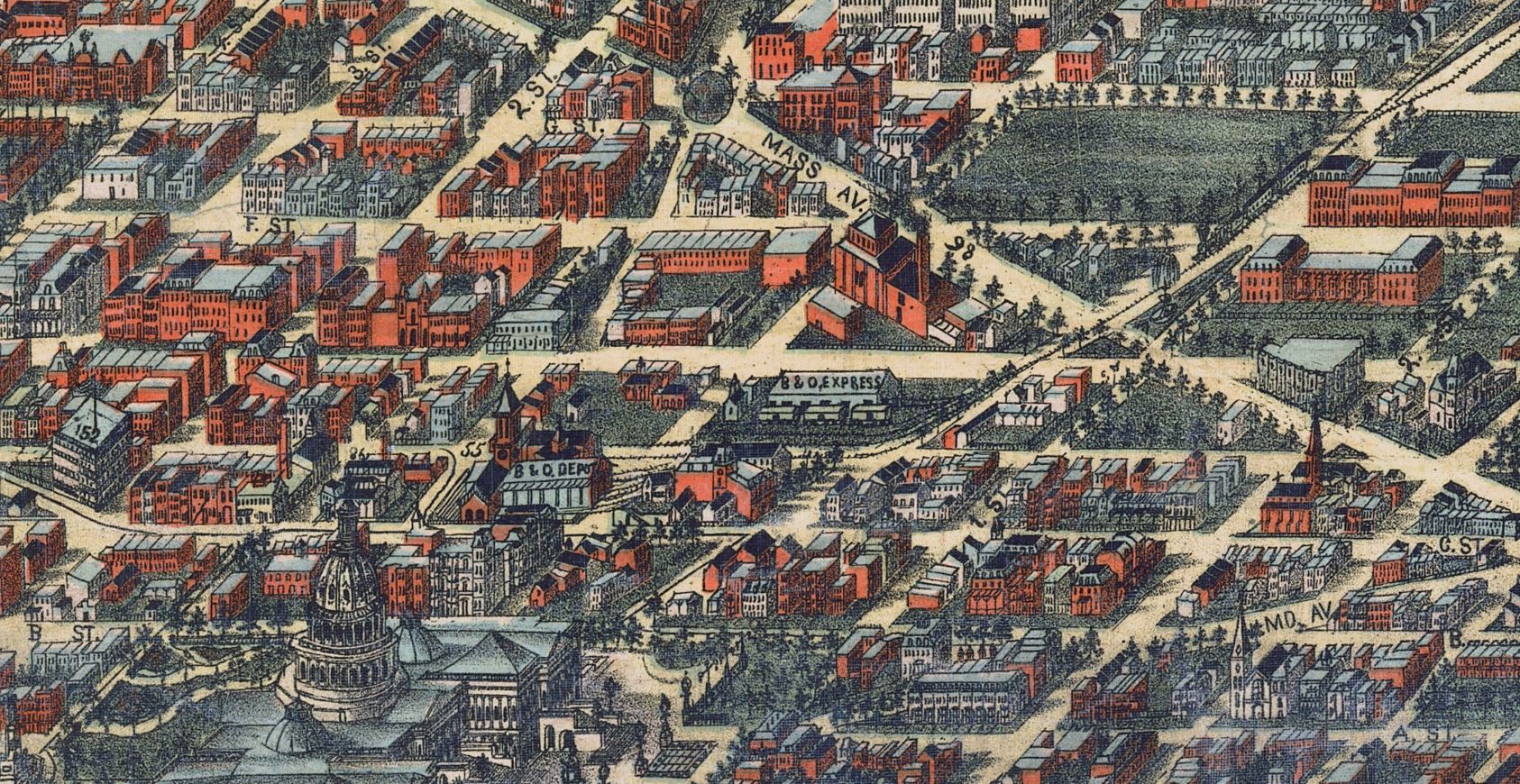Swampoodle developed during the second half of the 19th century, providing a place of refuge for emigrants following the Great Famine of Ireland that devastated Ireland between 1845 and 1849. Originally, the northeastern part of Washington DC above Judiciary Square was known as “English Hill” from E Street NE/NW on the South and 4th Street NW on the west all the way to Boundary Road. It was a rural area with almost no buildings and gravel sidewalks. This original settlement contracted to the area bordered by 4th Street NW, 1st NW, E Street NE/NW, and H Street NE/NW. “Swampoodle” was the name of a smaller settlement along H Street between North Capitol Street and 1st NE but extended to take a big part of “English Hill.”
https://yoredc.org/wp-content/uploads/2022/08/A-2-Wash-Nationals-and-American-Baseball-by-Ceresi-and-McMains-15-1.pdf

The neighborhood gained a reputation for being a lawless shantytown, where crime, prostitution, and drunkenness were rife during and after the Civil War. At the district’s core was Jackson Alley, located next to the Government Printing Office Building (between G and H) and crossed the North Capitol. It was considered a virtual no-go area for the police and new recruits were often sent there for training. The problem was more with the younger generation than the older folks. Gangs of young men known as “poodles” were the main cause of concern. But it was also a place to find work for its inhabitants. For a long time, Jackson Alley was inhabited by “tinkers” or “tinners” because they were tinworkers.
Swampoodle’s earliest residents, mostly Irish immigrants, and free African Americans helped build this city. Their hands crafted the White House, Capitol, and other buildings.
More once-enslaved people arrived seeking work during the Civil War (1861-1865). In the 1880s Italian stone carvers and masons found affordable lodging here while building the Library of Congress, Union Station, and the National Cathedral.
In the early 1900s, Congress located Union Station in Swampoodle.
The area was known for overcrowding and malaria, typhoid, and dysentery outbreaks. But Swampoodle was a thriving community, whose Irish construction workers helped build Washington, DC. As Swampoodle was then on the city’s edge, many residents kept goats and cows, sometimes in livestock pens among the alleys dividing their modest houses. Until the 1880s, the north side of K Street was not built, and the only things there were swamps, pasters, and the railway track. This almost rural lifestyle continued until about 1907 when Union Station was built.
Swampoodle Grounds with a capacity of 6000, was the home of the Washington Statesmen baseball club from 1886 to 1889. It was located on a block bounded by North Capitol Street NE and tracks (west); F Street NE (south); Delaware Avenue NE (east); and G Street NE (north). The McDowell and Sons plant, seen in the background of the ballpark photo behind right field, was listed in city directories as the corner of Massachusetts Avenue and North Capitol Street.
The NoMa neighborhood in Northeast D.C. has an office park today, but there was a time when goats grazed that land, overseen by Irish immigrants who settled in the area more than 150 years ago.
Growing Up in Swampoodle40067761
Sources and Related Links